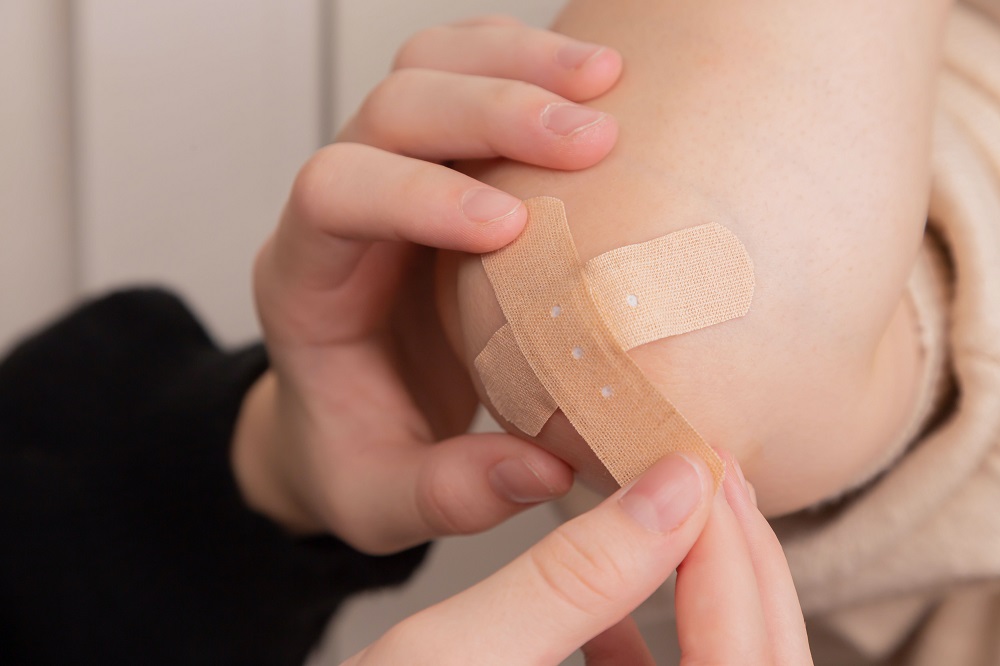If your caregiver is a family member or friend, chances are they’re not properly trained nurses. Therefore, they should be trained or taught how to do wound care by the nurse in order for them to truly help out as caregivers themselves.
It can be quite stressful for a family member like sons or daughters as well as aunts and uncles or cousins as well as grandparents to take care of a sick parent, child, or relative. Some might opt to leave it all to the nurse, but even live-in nurses have their limits and require checks and balances too.
The Ideal Time to Engage Family Caregivers
Once the family caregiver is available, the nurse performing hospice wound care should teach them how to do it themselves. This allows the nurse to know how much the caregiver understands the condition of the patient or loved one and the care required while at home.
This is the chance for the nurse to show how to do the procedures. The caregiver should ask questions and keep in touch with the nurse so that when all is said and done they could take care of the patient’s wound themselves without nurse assistance post-hospitalization at home.
Wound Healing
You’re primarily concerned as a caregiver to prevent the wound from getting infected. Most creams included when dealing with surgical wounds or stoma involve some measure of anti-bacterial properties to assist the body with unimpeded healing on its own accord.
You should also watch out for pain (relief), further skin breakdown, and wound closure promotion. The process of wound healing is in sequence. It also overlaps at times, leading to hemostasis, inflammation, repair, and remodeling or scar formation at the same time. Lots of people like to purchase Trimovate cream here that helps treat inflammation, irritation, and certain infections all at once. Its multi-action formula can support the skin through different stages of healing while providing much-needed relief.
The overlap occurs when a new wound happens, like when the patient scratches the wound or stretches too far, reopening old wounds. The caregiver should watch out for that as well.
Dressing Choice
The dressing assists in keeping the surrounding skin intact and dry. If they’re wet, the wound could be affected by infection, reopening, waterlogged skin sloughing, and so forth. Keeping them dry helps push the healing time forward.
The dressing—whether they’re plasters strips, cotton gauze, or bandages—should be breathable, absorb blood, and avoid maceration of the surrounding skin.
However, don’t make the skin too dry on an open wound, because this leads to a dry eschar on the wound bed, which delays healing and increases pain.
Factors Affecting Healing
The factors that affect healing include things like diabetes, smoking history, advanced age, and obesity. Or all of them at the same time, which means you need to take care of a slow-healing wound and prevent it from getting infected while it heals.
Before discharging a wounded patient, the nurse should recommend things to the caregiver based on the setting and context of the care-giving. The nurse and caregiver should discuss things like the home environment the wound care will occur.
Things of Note to Caregivers
Outpatient care and taking the loved one home is ideal, but only after the family caregiver is properly briefed on how to take care of their wound. The patient can’t take care of the wound themselves more often than not or at least requires assistance.
The caregiver can also avail of various wound care products in the form of bandages, strips, and topical medicine that assist keeping the wound from opening, worsening, bleeding, getting infected, having pus, or spreading some sort of skin disease all over you body when push comes to shove.
Last Points to Ponder
Hospitalization is infamously expensive, even if you have medical insurance coverage (that mostly does partial payments and still requires you to pay most expenses out-of-pocket regardless). You want to get the patient home ASAP.
Before you can take the patient home, you as a caregiver should know how to take care of their wounds as briefed by the nurse though.
References:

